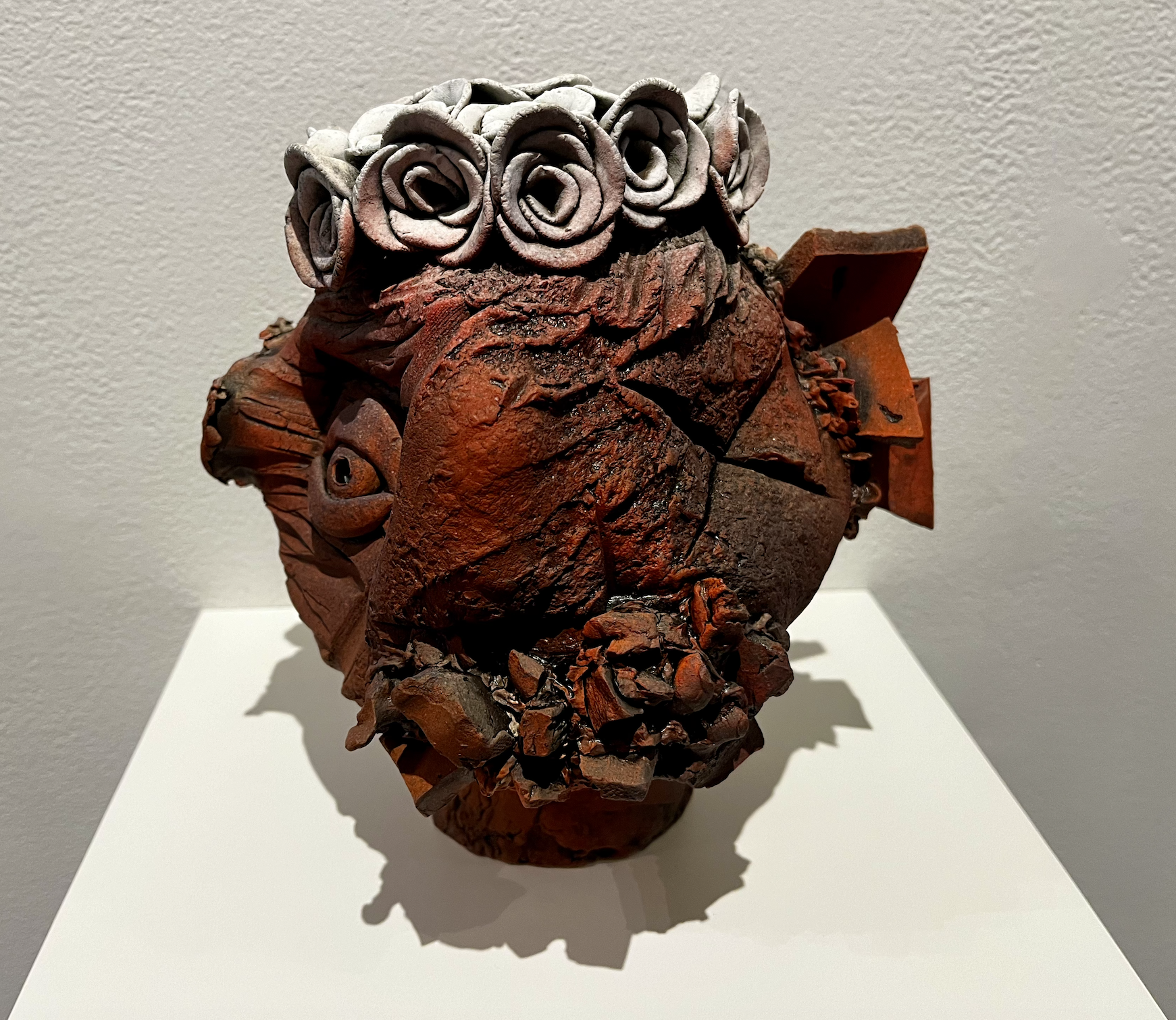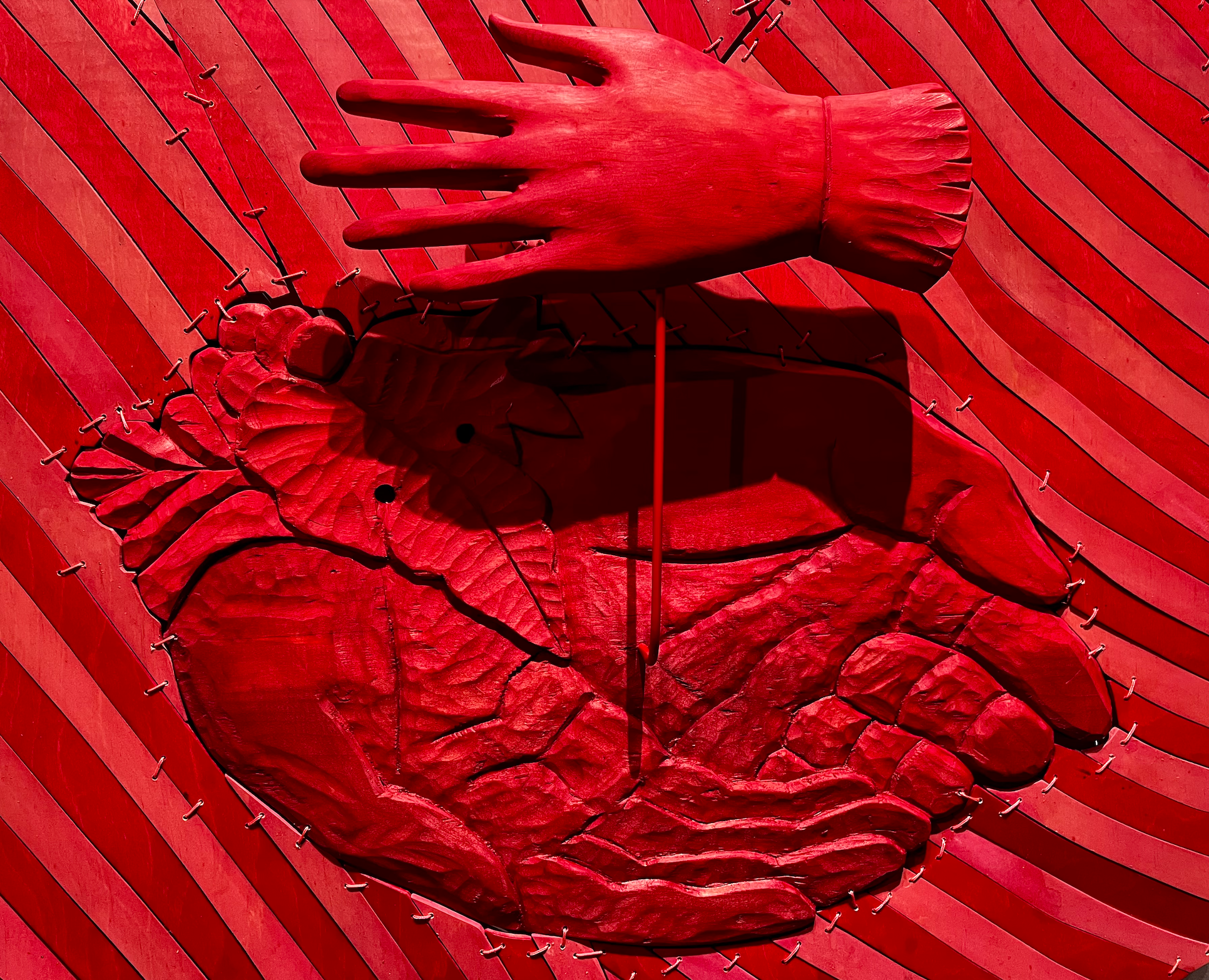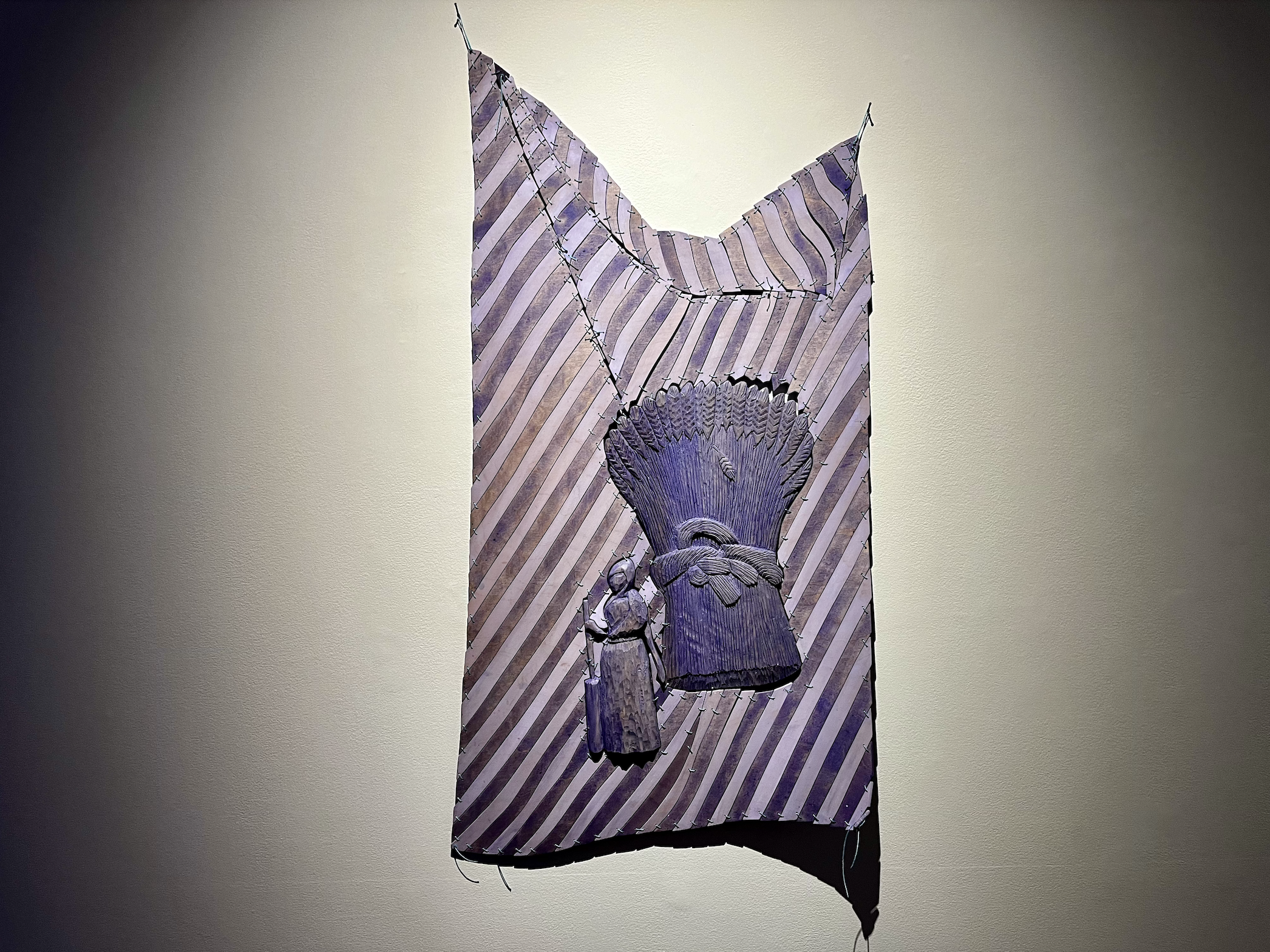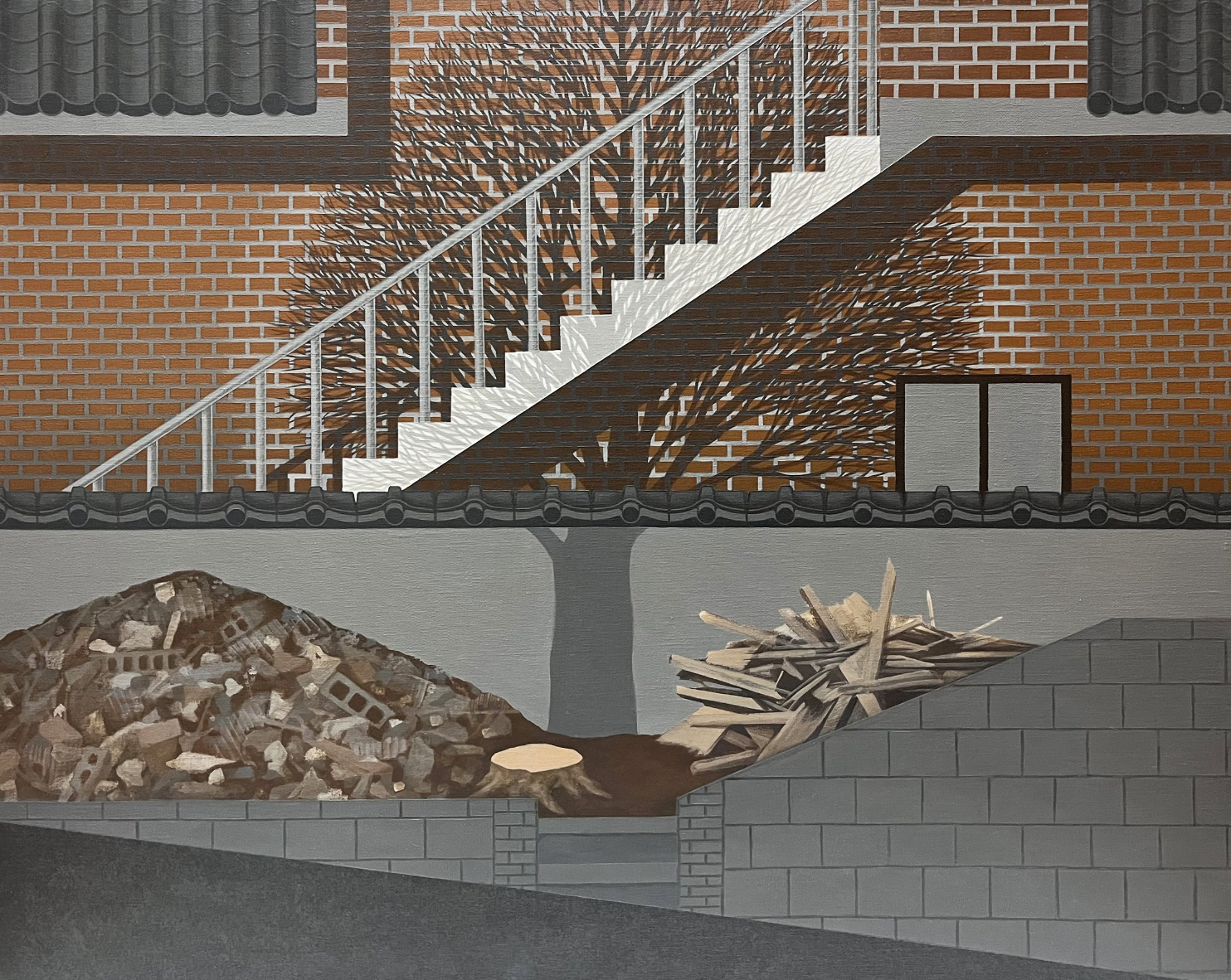To Be Bound By Place and Lore
Pentimenti Art Gallery
145 N 2nd St.
Philadelphia
Oct. 25, 2024
The group exhibition "To Be Bound By Place and Lore" launched Friday night at the Pentimenti Art Gallery. Three of the five artists featured — Dan Gunn, Raúl Romero, and Isaac Scott — spoke to how their work explores the psychological underpinnings of place. Their work, and their words, left me with three different ways to think about place.

1. Place is the origin.
Surrounded by hand-coppered rounds resembling lily pads, Raúl Romero invited us into an autobiographical soundscape. We listened to the chirps of the Coqí frog and the underwater reverberations of Black Drum Fish. Two years ago, Floridians started calling the cops to report mysterious thumps — was there a party going on somewhere, and could they turn down the noise? Turns out it was the sound of the Black Drum Fish mating underwater. Similarly, Romero noted that “the Coqí sound sometimes keeps tourists awake all night when they travel to Puerto Rico … but for me it’s a calling of home.”
The installation pictured above “touches on different moments of my cultural heritage, my family, where I come from and how I grew up,” Romero told us. The Black Drum Fish in particular hits on the resonance of reproduction.
Place, Romero seems to be telling us, is about the truth of where we start as organisms, as individuals, as communities. As we travel through life, place echoes forward through us, making itself known no matter what. It may make us uncomfortable or force others outside of ourselves into the reality of unfamiliarity. But place as a point of origin is a fact of physics.

2. Place is a garden.
“Did you hear about the rose that grew from a crack in the concrete?” Tupac Shakur wrote. Shakur’s poems about the inner city’s capacity to squash human spirit before it can even get started inspired Isaac Scott’s latest works, a bunch of battered heads crowned with roses (pictured). Scott’s sculptures are, in my opinion, richer translations than Tupac’s punchy stanzas of the beleaguerment that stems from exhausting oneself trying to escape the confines of society. Scott, who hails from Wisconsin and currently lives in Philadelphia, has crafted a collection of skulls battered by the materials of their own existence; bricks poke out of tired ears and bent window bars burrow into ruddily hidden brains. But on the forehead of each skull sits an untouched crown of blossoming roses, recognizing the potential of the human mind to find ways to flourish despite the confines created by our realities. Place is the origin, but it’s also the platform — it’s up to us to accept where we’re from in order to take pride in where we go from there. Scott sees place as a garden of possibility, even when it looks closer to an apocalyptical side walk too hot to set foot on.


3. Place is a theater set.
“Crafts carry a historical language of place,” rural representative Dann Gunn told the audience. Gunn, who used to work in theater rigging and whose father was a tree care worker, clutched a glass of wine as he stood next to one of his vibrant wooden quilt-scapes involving a pair of blood red hands holding a scarlet, gloved weathervane. Gunn stitched together several plywood quilts decorated with objects taken from The Index of American Design, a federal art project from the early 20th century that sought to catalog American folk art. As Dunn put it, the index is inevitably a “nationalist project” informed by a limited understanding of what it means to be American.
Like a stage director, Dunn takes advantage of the inherent emotionality of those indexed objects — like the homey feel of a dutch roof — before cashing in on the cynicism of his inner artiste by aiding viewers in the process of recognizing the loaded nature of their own aesthetic connections. The quilt may scream of midwestern comfort, but you’re forced to look twice when you realize the blanket is broken-down plywood stitched back together. Dunn shows his skill by working with wood, a fundamentally inflexible material, but he also shows how place is just a myth — a constructed backdrop that we sew together to serve our own purposes. In order to see place as the foundation for truth, as Romero and Scott would like us to, we have to unpack the lies with which we’ve lacquered the floor.
To Be Bound By Place and Lore remains on display at Pentimenti Art Gallery through Dec. 20.






